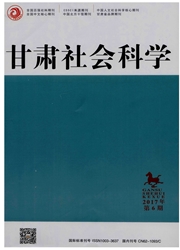

 中文摘要:
中文摘要:
该文将我国14个连片特困区分为绿色丰富型贫困、绿色缺乏型贫困和混合型绿色贫困等三大类进行研究。研究结果表明:2013年,连片特困区51%的农村贫困人口生活在森林覆盖率大于44.7%的绿色丰富型贫困区,28.1%的农村贫困人口生活在森林覆盖率低于21.63%的绿色缺乏型贫困区。14个连片特困区具有线与带状分布规律,主要分布在胡焕庸线和我国二、三阶梯分界线周围以及西部边疆地带。14个连片特困区面临同样的经济发展问题,并且产业体系相似;连片特困区大多都是少数民族聚居区和革命老区;此外,农村贫困人口还呈现出大集中和大分散等特征。
 英文摘要:
英文摘要:
In this paper,14 contiguous destitute areas of China are classified into three categories:green-rich poverty,green-deficient poverty and mixed green poverty.The results show that:in 2013,more than 51% of rural poor population in contiguous destitute lives in green-rich poverty areas of which forest coverage rate is more than 44.7%,28.1% of rural poor population in contiguous destitute lives in green-deficient poverty areas of which forest coverage rate is less than 21.63%.14 contiguous destitute areas were scattered in linear and zonal pattern which were mainly distributed along Heihe-Tengchong Line,boundaries of China's secondary and third stages and the western border areas.They had similar economic development problems and industrial system.And most of them were ethnic minority areas and old revolutionary areas.In addition,rural poverty population is also showing a large concentration and high dispersion characteristics.
 同期刊论文项目
同期刊论文项目
 同项目期刊论文
同项目期刊论文
 期刊信息
期刊信息
